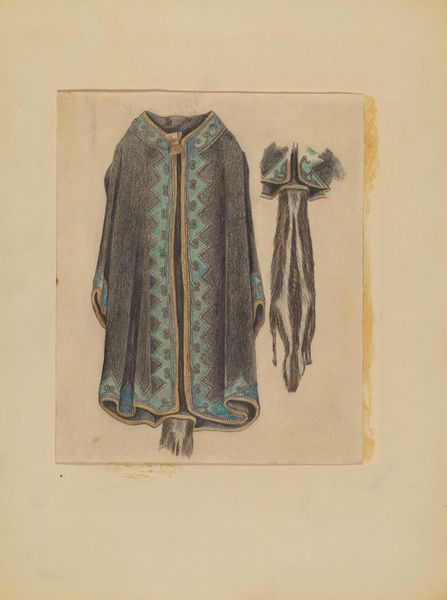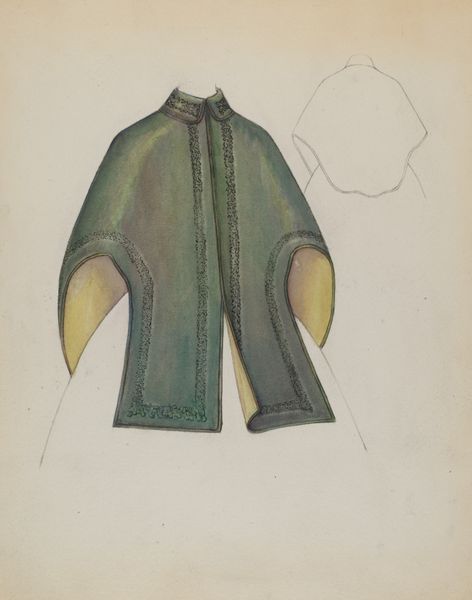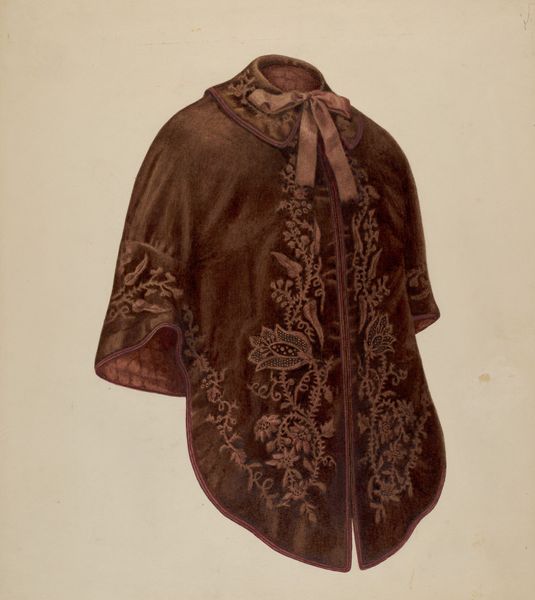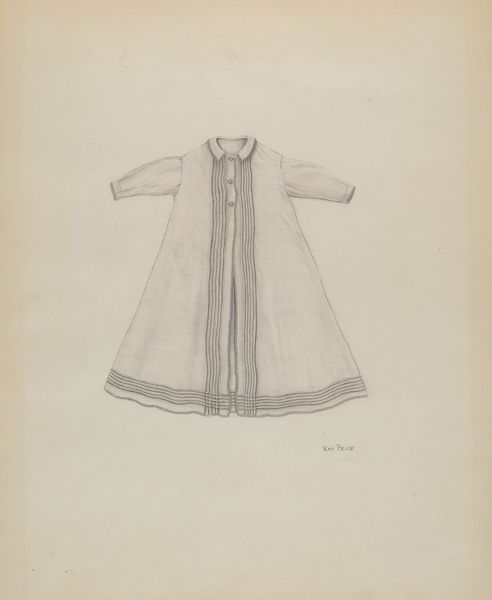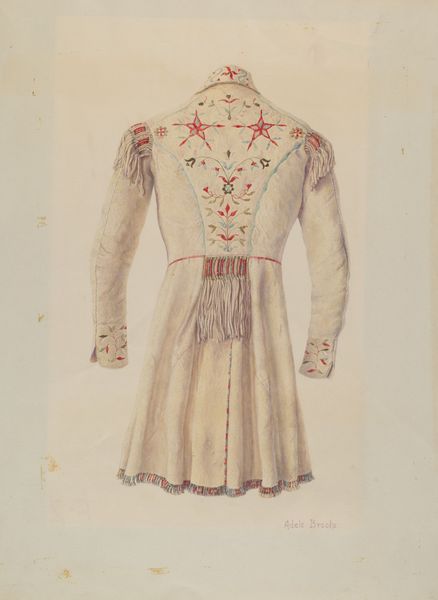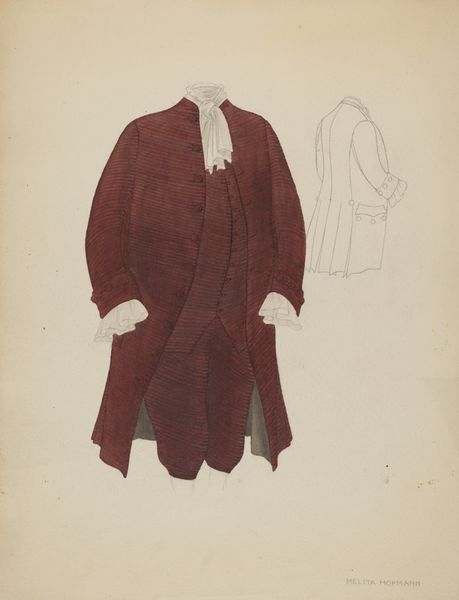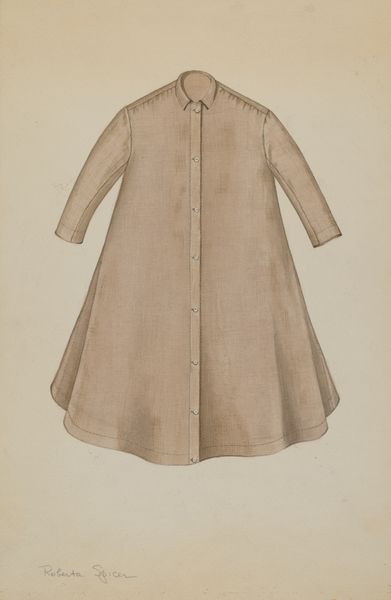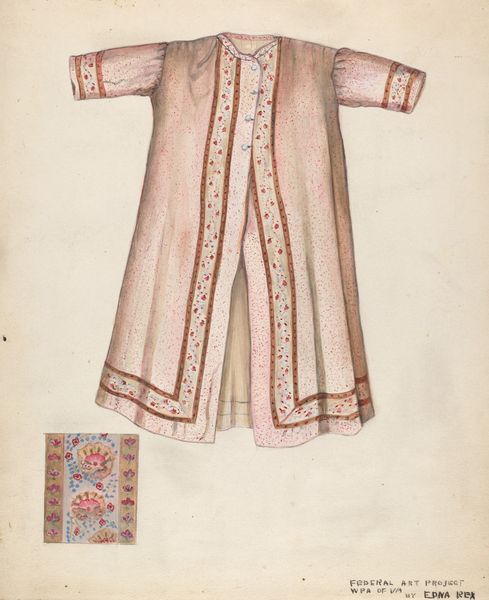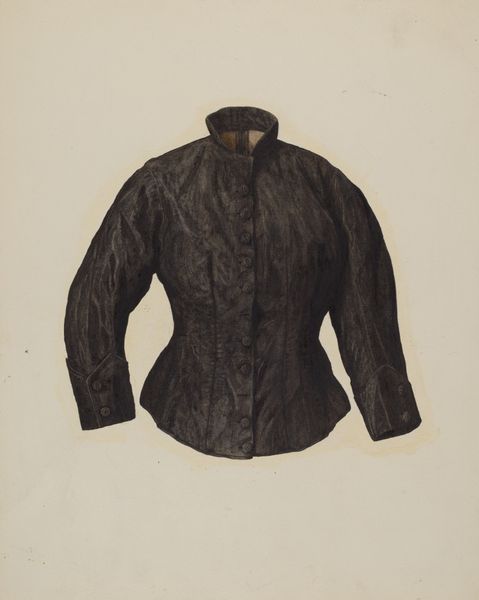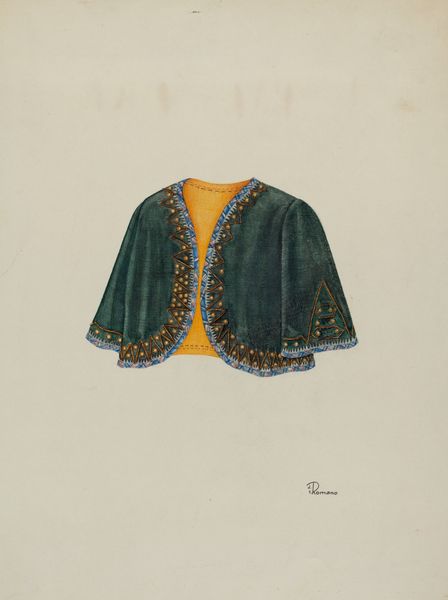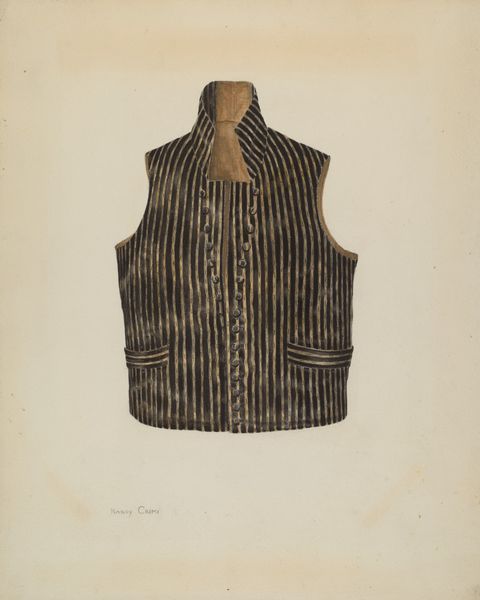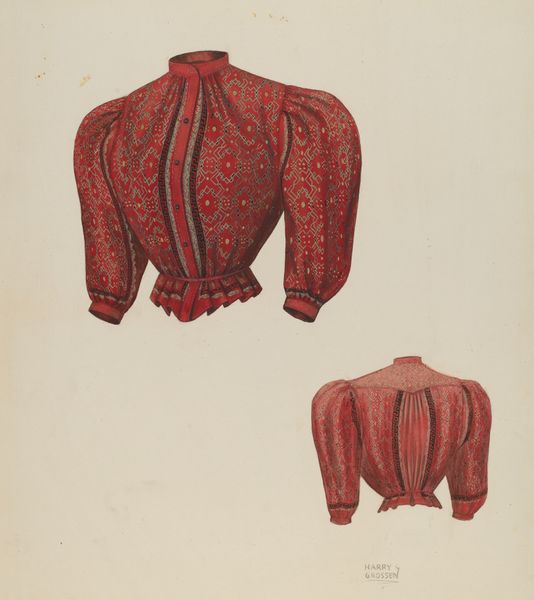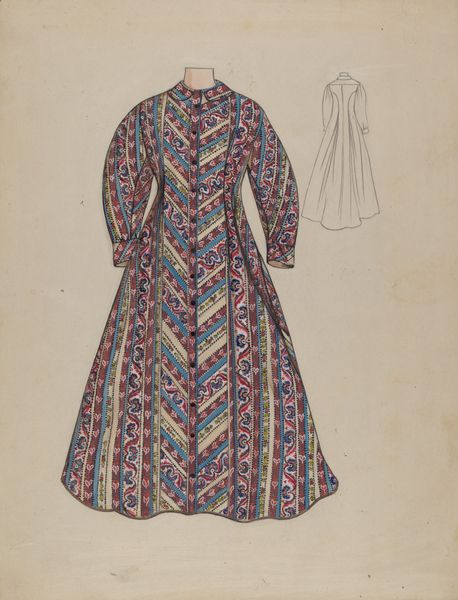
drawing, coloured-pencil
#
drawing
#
coloured-pencil
#
pencil drawing
#
coloured pencil
#
academic-art
#
realism
Dimensions: overall: 18.7 x 14.5 cm (7 3/8 x 5 11/16 in.)
Copyright: National Gallery of Art: CC0 1.0
Editor: Here we have Michael Trekur's "Dark Brown Cotton Coat," from around 1935. It's rendered meticulously in colored pencil, isn’t it? There’s something very intimate and precise about the rendering, yet the subject itself is simply an article of clothing. What strikes you about this work? Curator: Well, precisely because it is an item of clothing, it provokes fascinating questions. Who wore this coat? Where was it made? Was the artist examining modes of production and their place in interwar society? What does the act of drawing – the artistic labour involved in reproducing such a mundane object – tell us about artistic practices at this time? The materiality of the cotton and the coloured pencils speaks to larger economic systems. What kind of consumer was supposed to purchase and wear this coat? Editor: So you're saying the image asks us to consider both the labour involved in its creation and the coat's original context? How would this coloured pencil rendering of fabric relate to its mass production and distribution, were that even the case? Curator: Absolutely. This isn’t just a portrait of a coat, but also perhaps of a system. Think about the coloured pencils as well, mass produced, consumed… How do the physical properties of these tools – pigment, graphite – mediate our understanding of clothing manufacture and access? Also, by framing this drawing as academic-art realism, it positions everyday wear like a coat into high art culture. Why do you think the artist made this decision? Editor: It reframes how we value clothing. Thinking of art objects as commodities in the marketplace, this work, initially about an article of clothing, comments back on the commodification of all things, art included. Curator: Exactly. So, considering the artist’s material choices, and the item depicted, it is possible to reconsider preconceived values attributed to 'high' and 'low' cultural forms. Editor: I’ve definitely gained a new perspective on how an image of such a seemingly ordinary thing can speak volumes about production, consumption, and artistic value. Thanks for showing that to me. Curator: Likewise, considering it within this perspective shows how everyday items bear social context, and allows us to question and reflect on the labor they entail, on art, and how we, too, consume all sorts of goods.
Comments
No comments
Be the first to comment and join the conversation on the ultimate creative platform.
